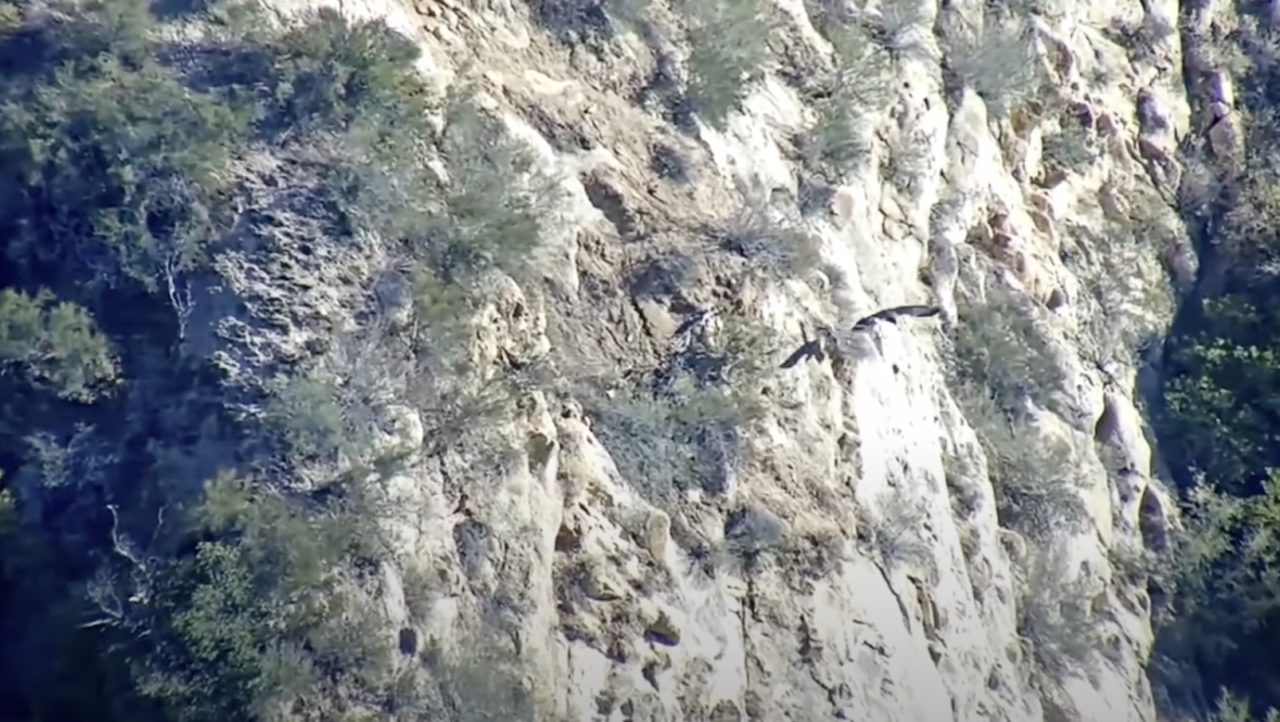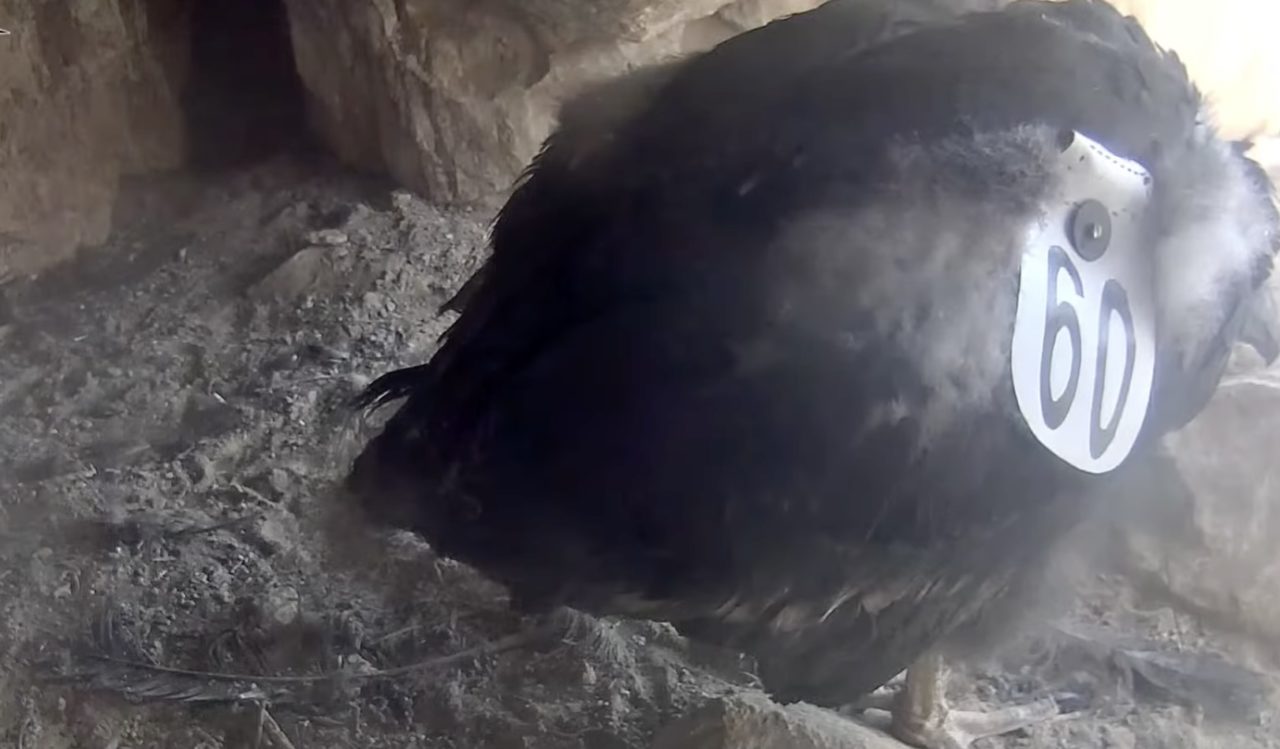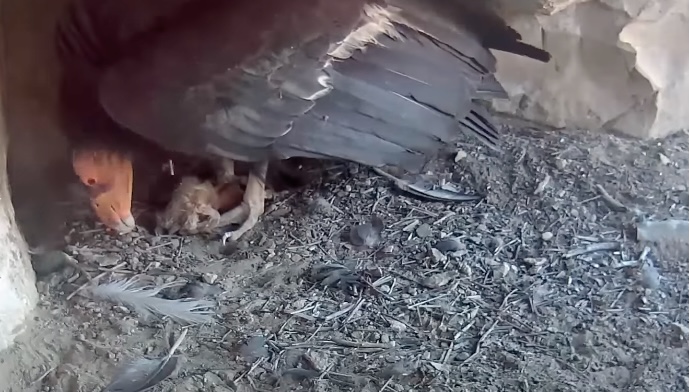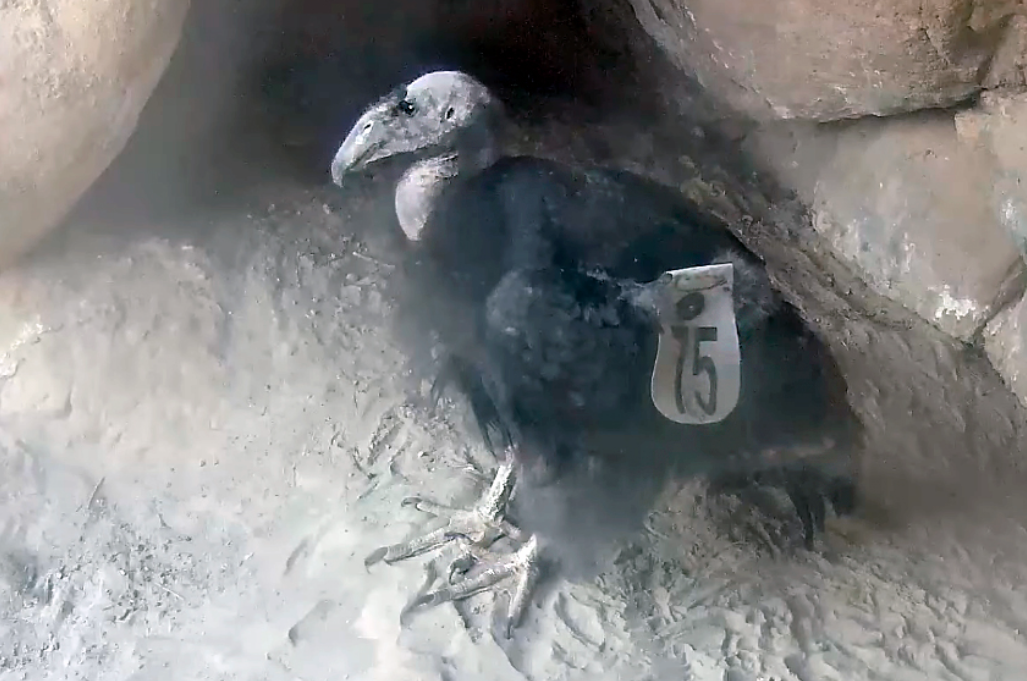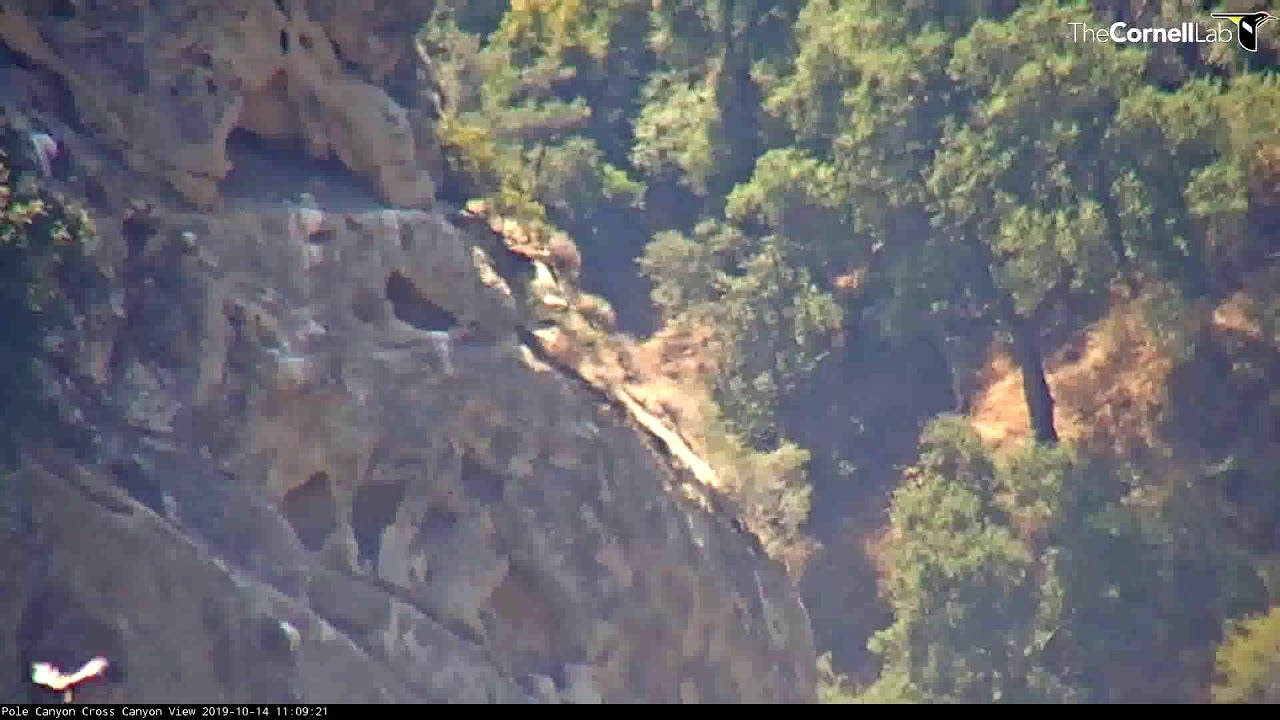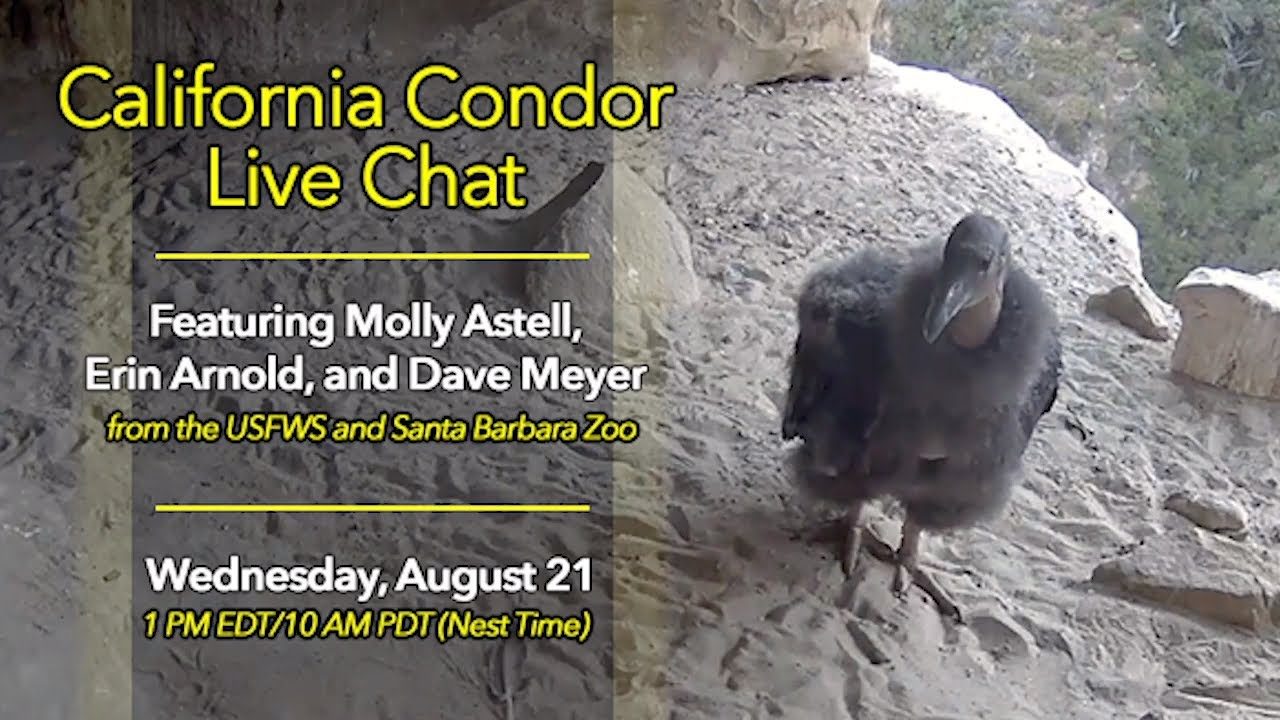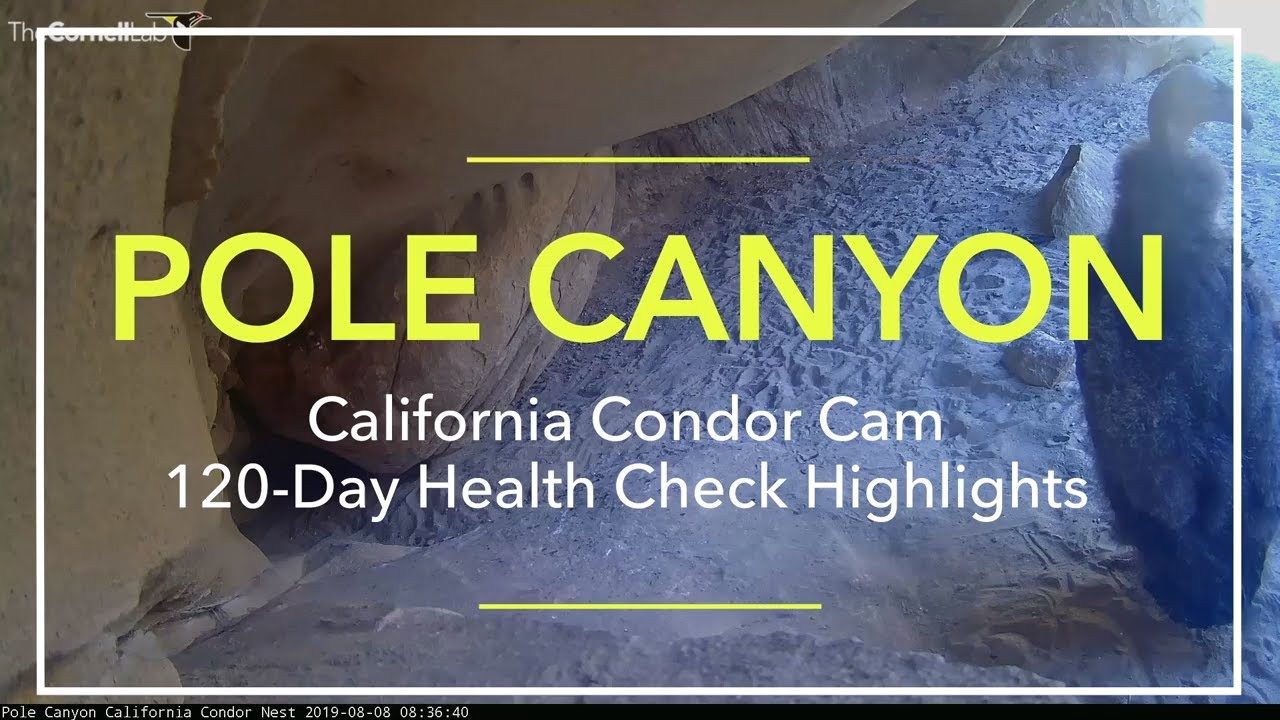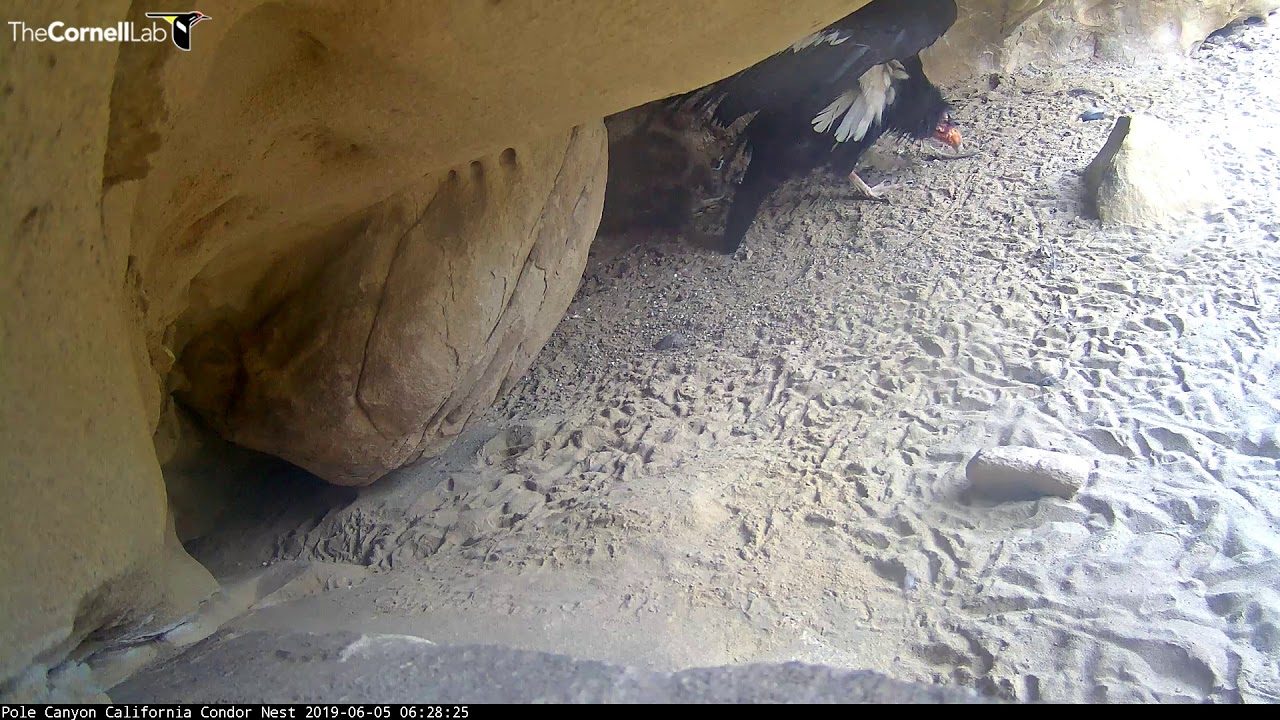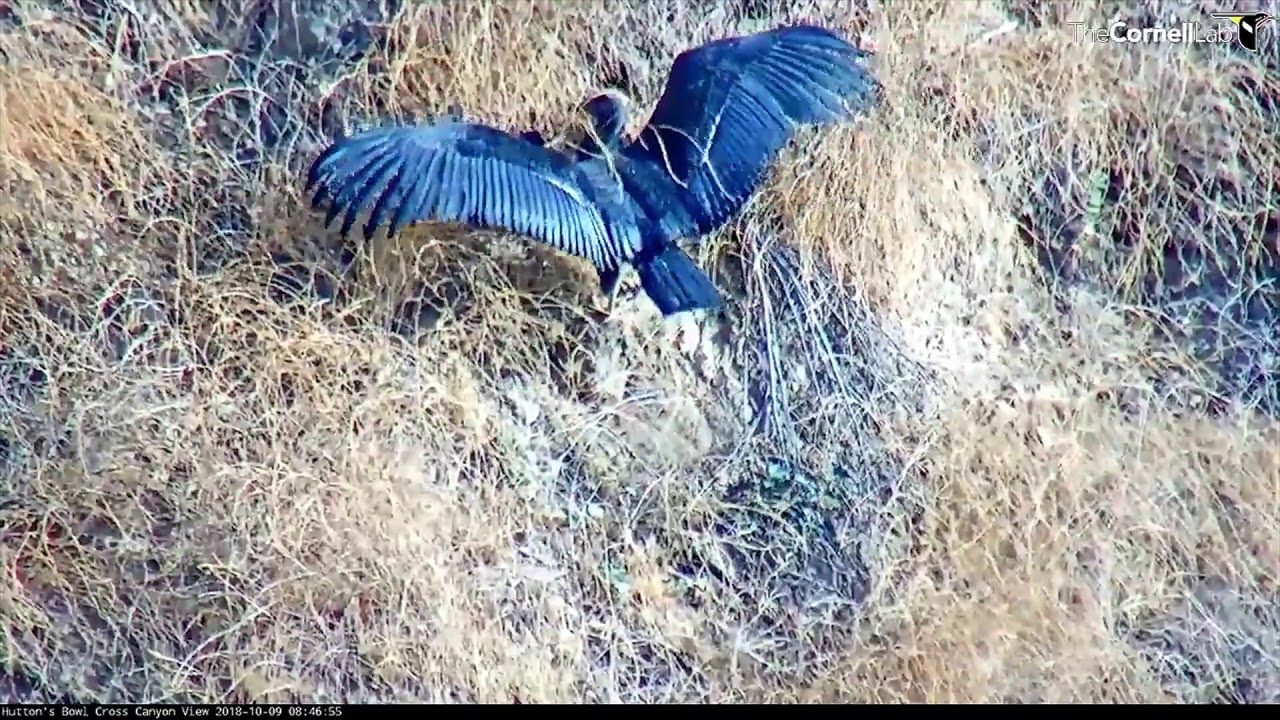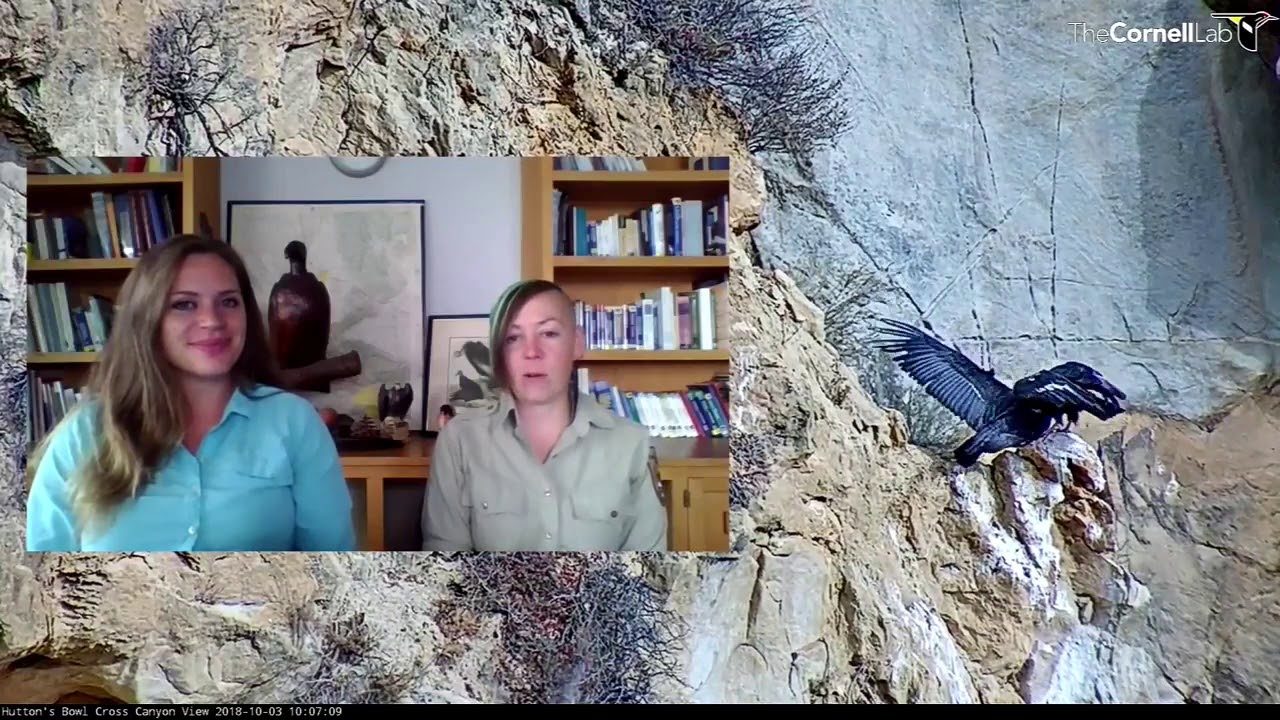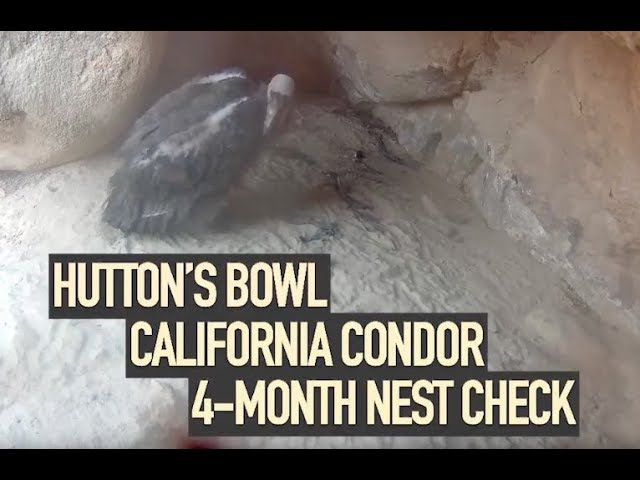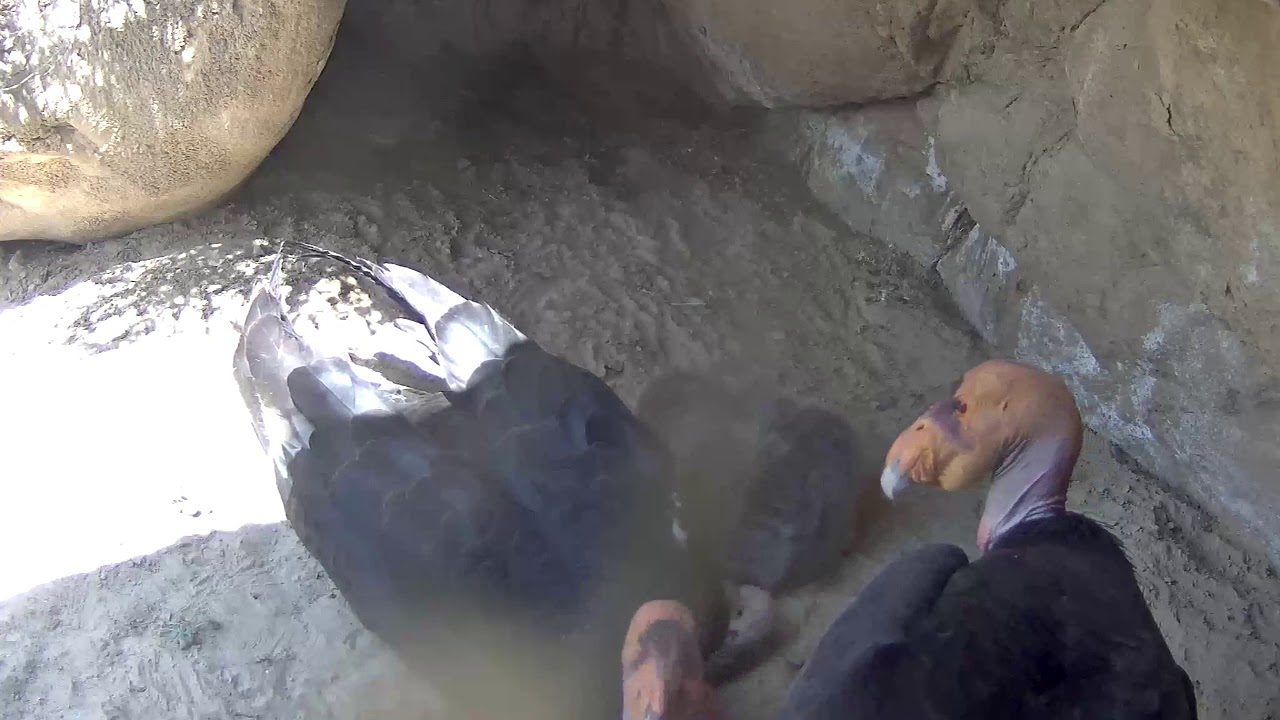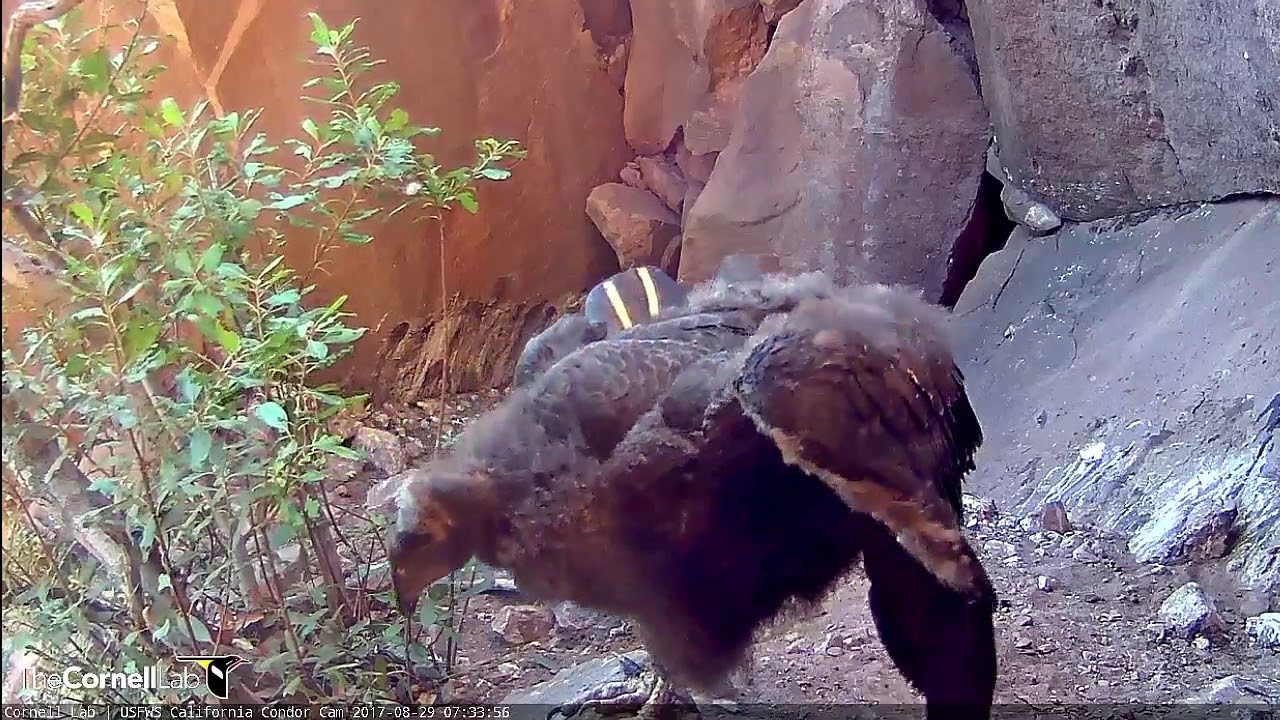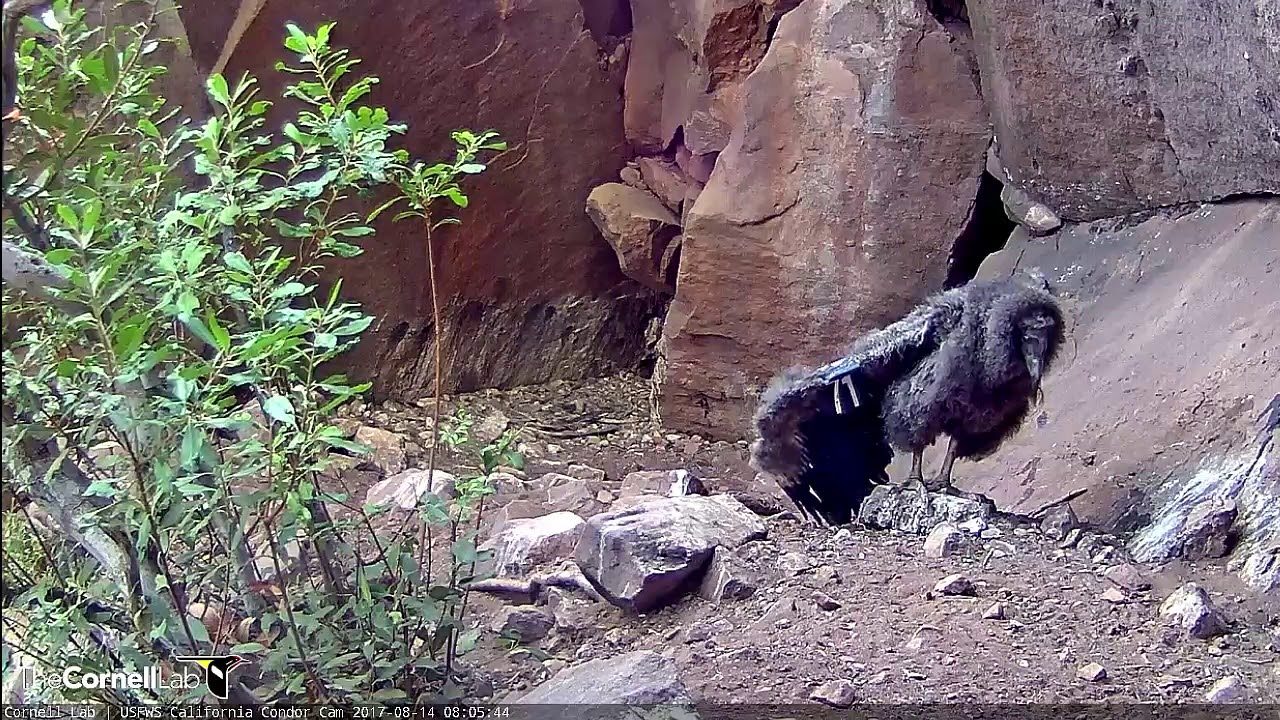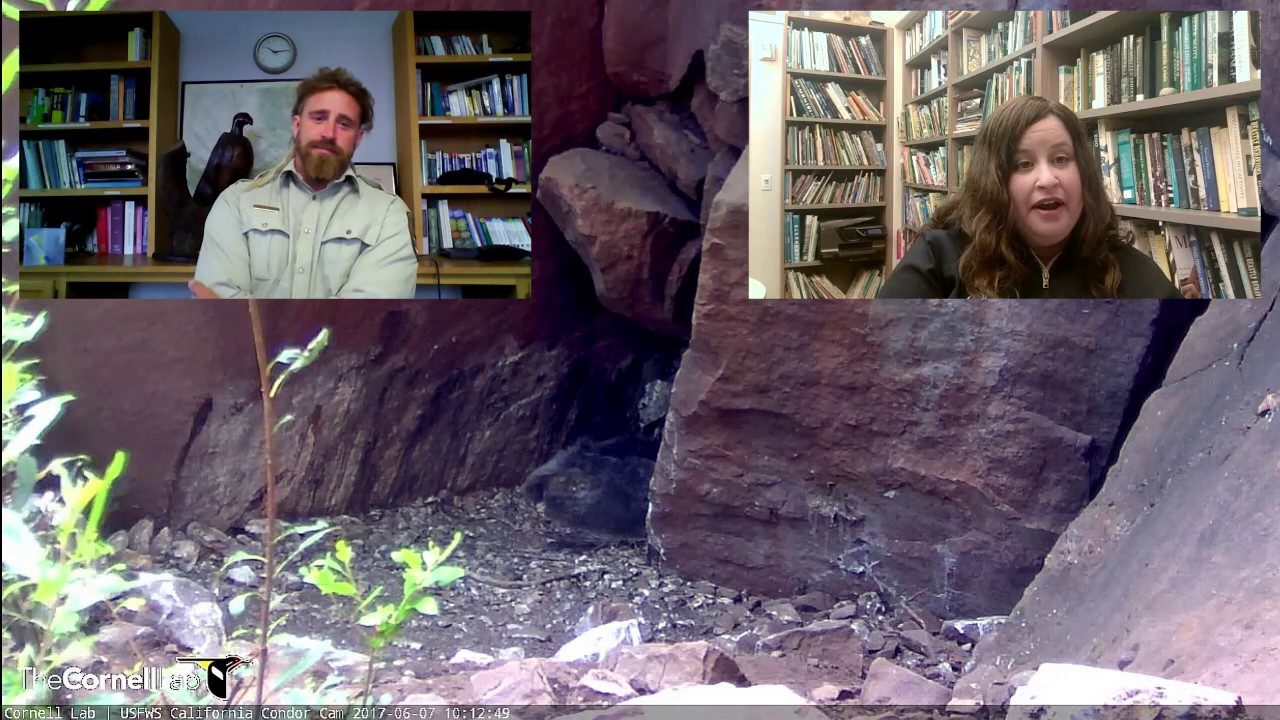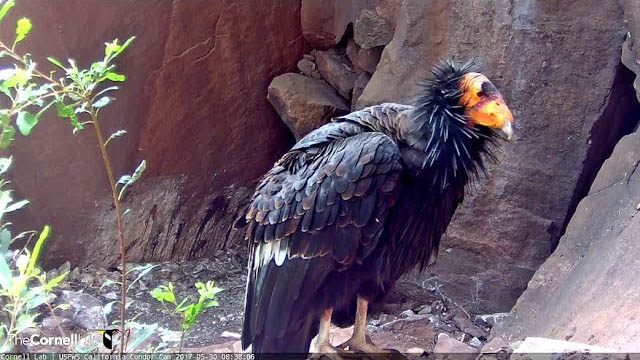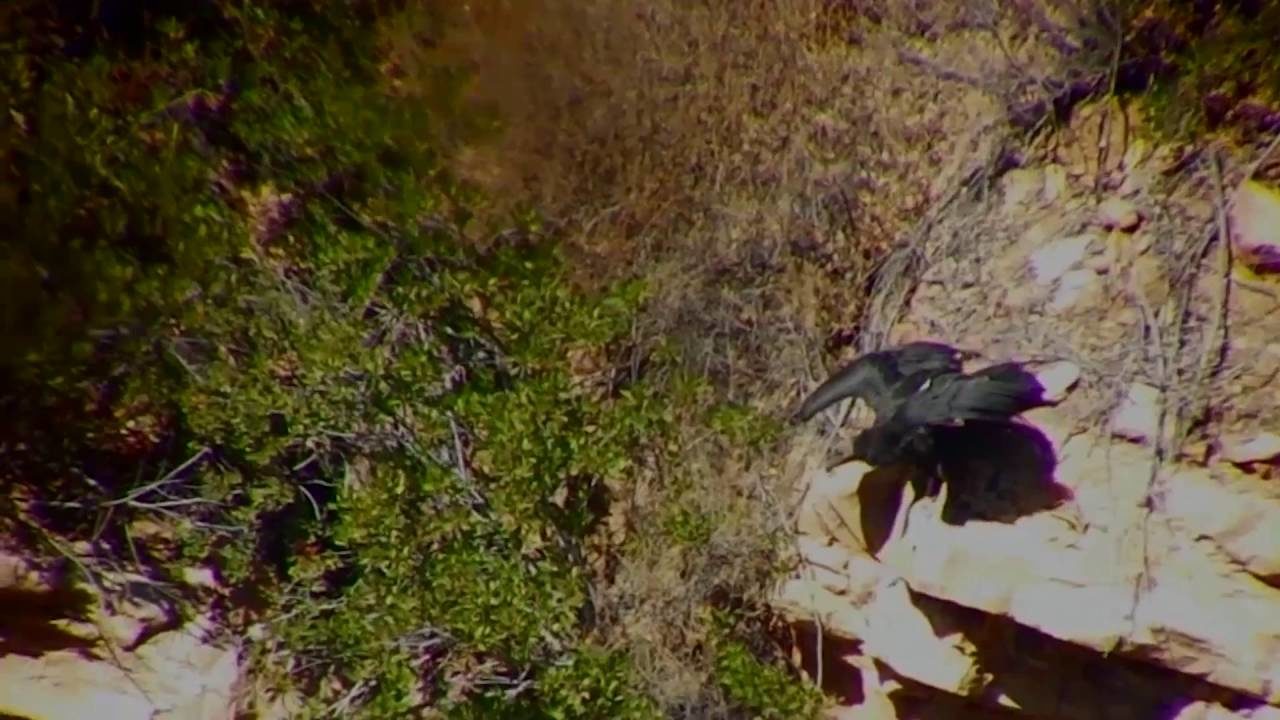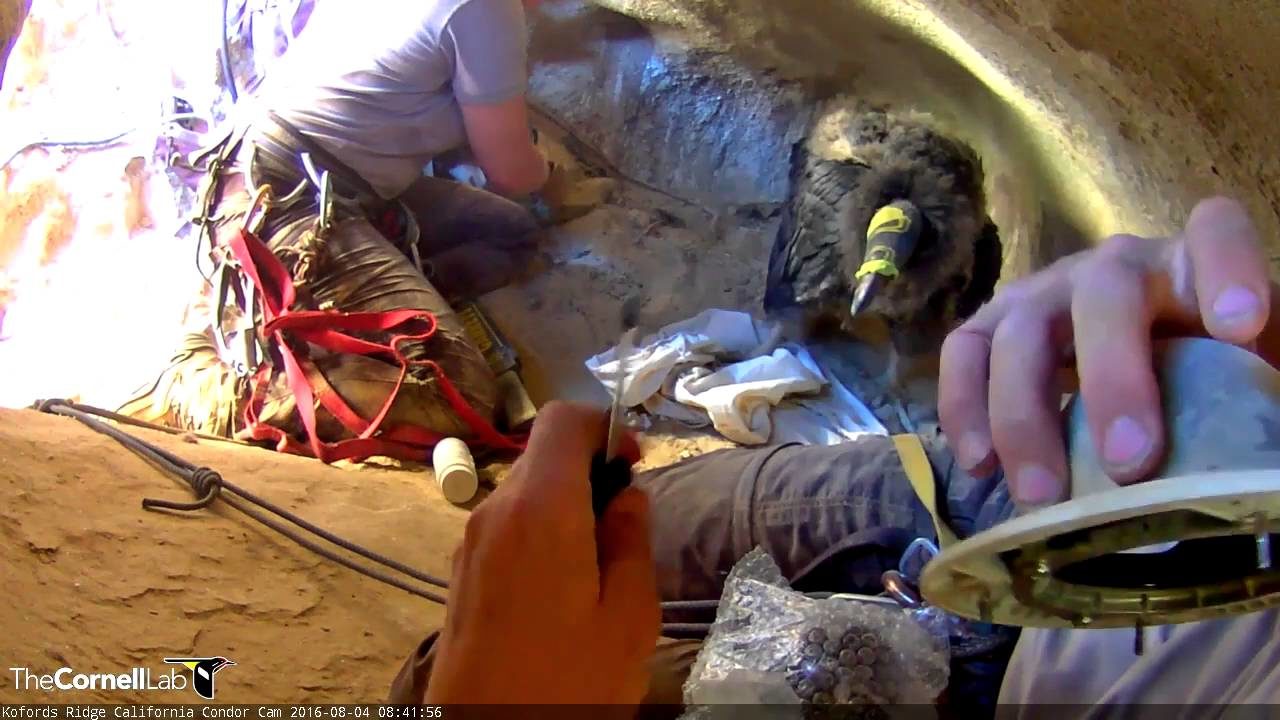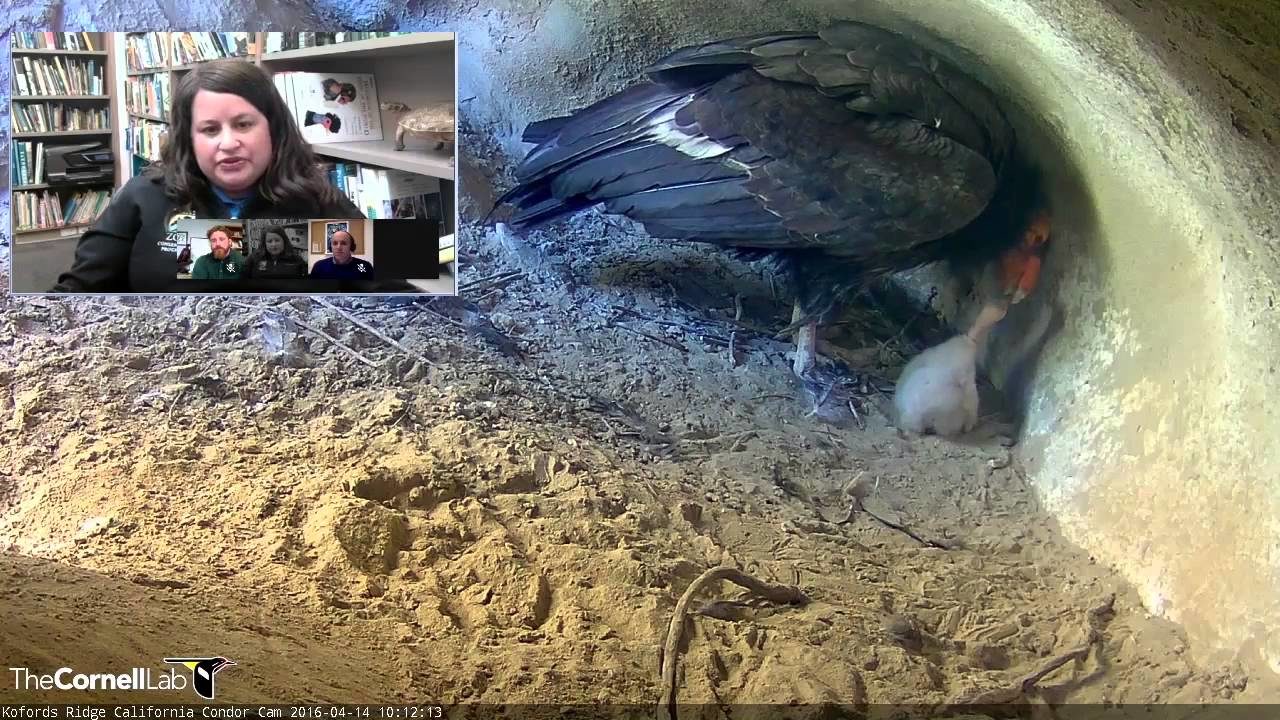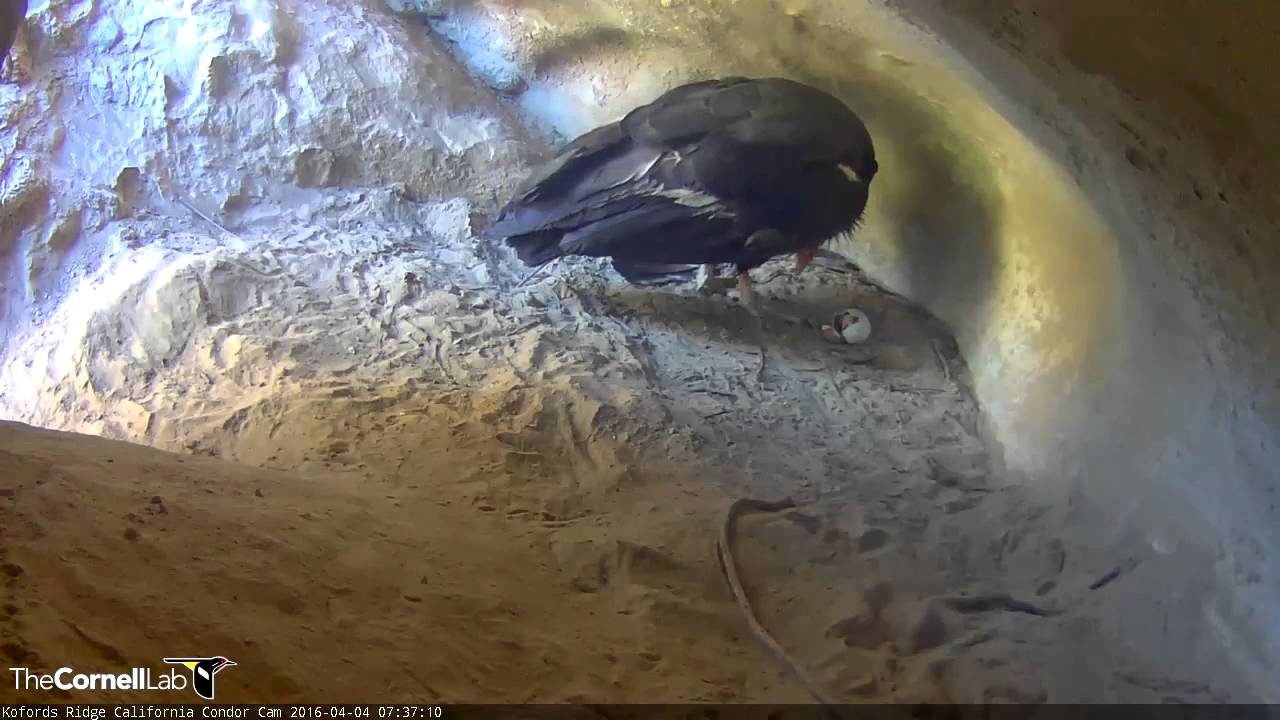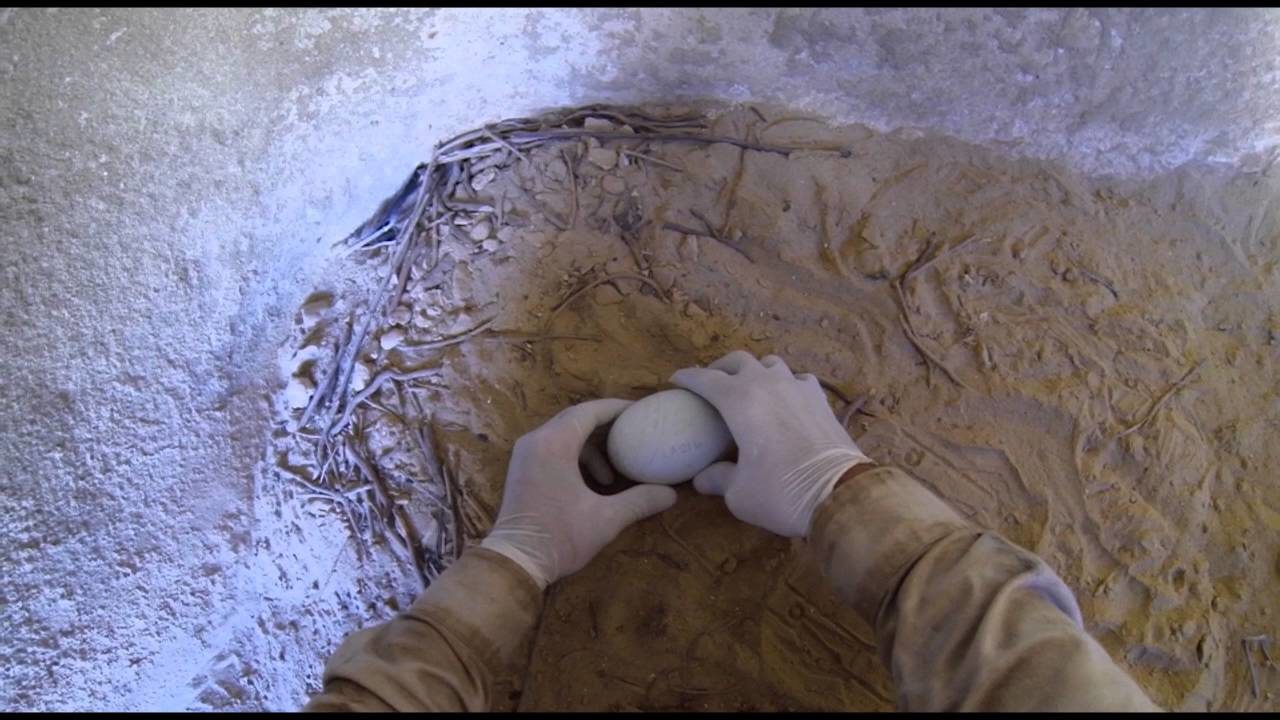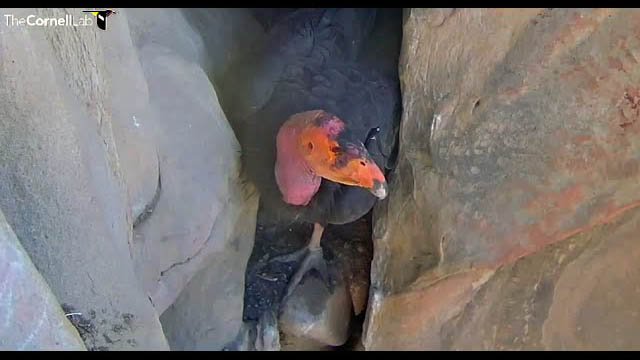California Condor Cam Timeline
Delve into the history of the California Condor cam.
November 20, 2022Review the main events, including nesting cycle milestones and other noteworthy incidents, in this historical timeline of the California Condor cam.
Jump To Season Timeline:
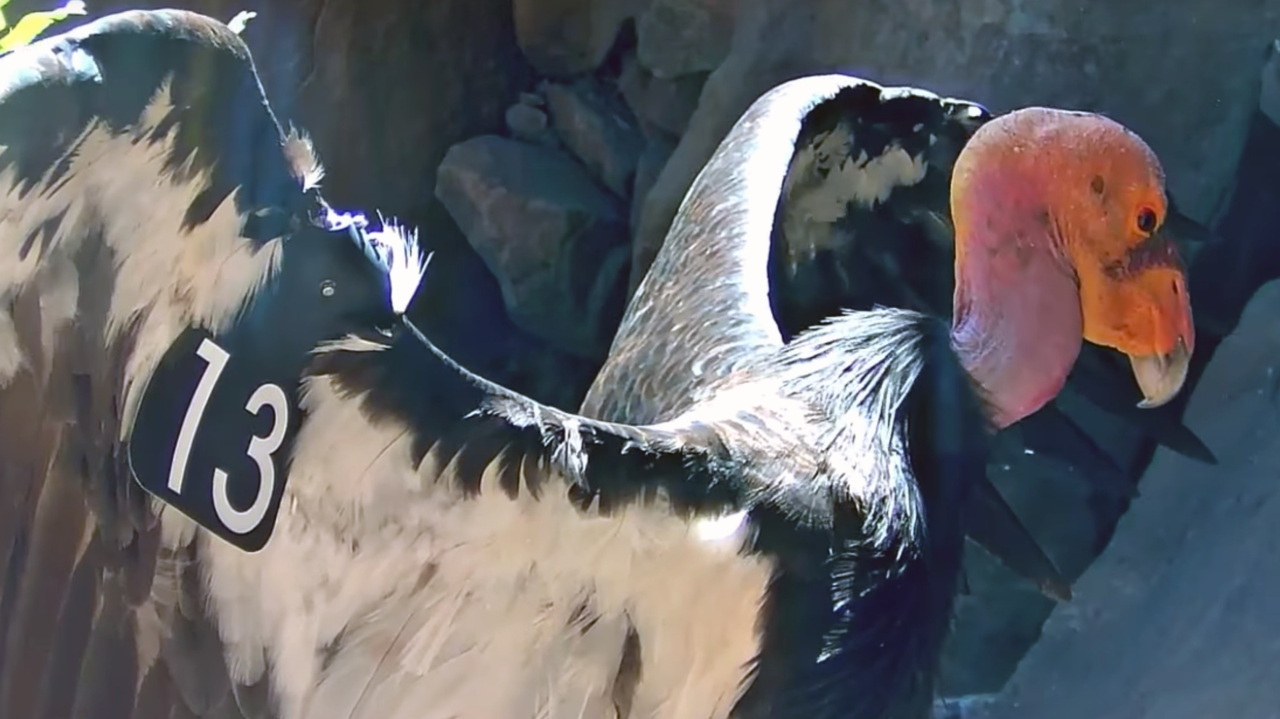
Nesting Cycle Dates & Information
| Nest | Year | Egg # | Lay Date | Hatch Date | Fledge Date | Chick Name |
| Toms Canyon | 2022 | 1 | March 19 | May 14 | Nov 15 | #1160 |
| Huttons Bowl | 2021 | 1 | Feb 14 | April 10 | Deceased | #1075 |
| Pole Canyon | 2019 | 1 | Early Feb | April 10 | Oct 14 | #980 |
| Huttons Bowl | 2018 | 1 | Feb 7 | April 6 | Oct 9 | #923 |
| Devils Gate | 2017 | 1 | Feb 20 | April 11 | Dec-Jan | #871 |
| Koford’s Ridge | 2016 | 1 | Captive bred | April 4 | Sept 16 | #815 |
| Koford’s Ridge | 2015 | 1 | Feb 15 | April 22 | Deceased | #793 |
2022 Season Timeline
Nov. 15, 2022: California Condor Chick Fledges Over Toms Canyon
After more than six months of growing up and exploring the areas around its nesting cave, California Condor chick #1160 fledged on the afternoon of November 16. Watch the chick enter the next stage of development from the cross-canyon cam. Perched on the cliff below the nesting cave, the 185-day-old condor opened its wings and launched into a confident flight, soaring down the canyon and out of frame. Now that #1160 has fledged, the youngster will remain semi-dependent on its parents (dad #462 and mom #846) for up to a year after it takes its first flight, as it learns how to forage, care for itself, and interact with other condors.
Sept. 20, 2022: Toms Canyon Chick Gets Wing Tag #60, DNA Tests Reveal Chick Is Female
Say hello to #1160! Toms Canyon California Condor chick stopped in front of the nest cam to show off its new wing tag, which was affixed to the wing during the nestling’s 120-day nest check by condor biologists. Now that the nestling is four months old, it has grown the large enough to receive its first handmade wing tag (white with black numbering) with a sewn-in radio transmitter. These tags are valuable conservation tools that help biologists track and monitor every free-flying condor in the wild. DNA tests also revealed that #1160 is a female!
May 14, 2022: Condor Cam Goes Live With Hatchling At Toms Canyon
Condors are back at a new site called Toms Canyon, located near the Hopper Mountain National Wildlife Refuge in Ventura County, California. At some point during the night of May 13 or early in the morning on the 14th, the breeding pair’s (male #846 and female #462) young condor chick successfully hatched! In this short clip we get two views of the bobble-headed youngster before the male settles back on top of the chick.
2021 Season Timeline
Nov. 12, 2021: California Condor Chick #1075 Dies After Fall From Nest Site
We’re saddened to report that the chick, condor #1075, died at the Los Angeles Zoo on November 12 while undergoing treatment for injuries associated with territorial aggression at the nest site by the non-parent adult male condor #247 on October 12.
April 26, 2021: California Condor Cam Returns To Huttons Bowl
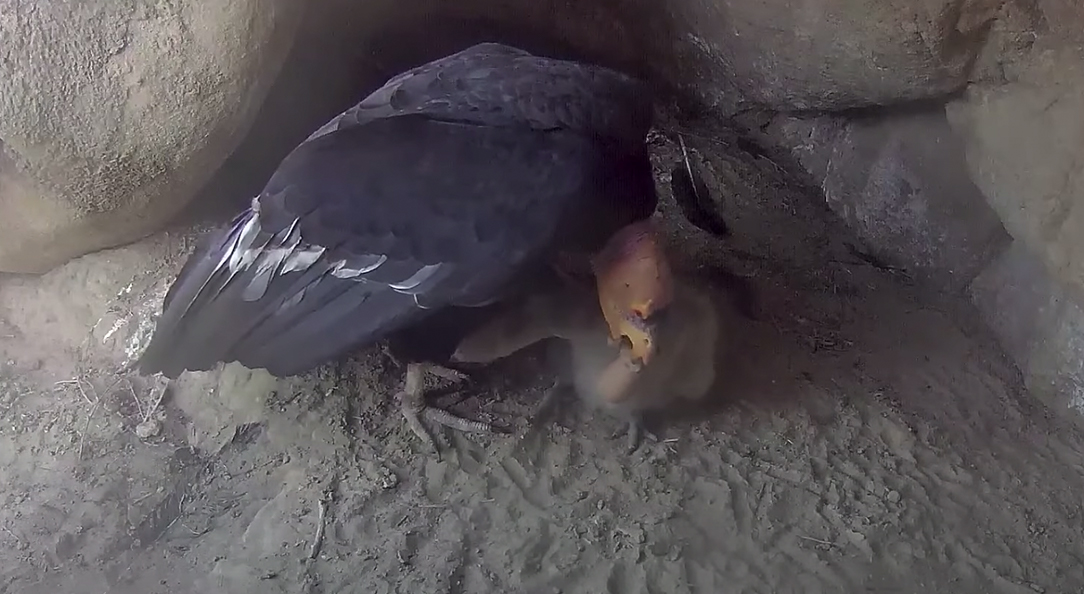
After a yearlong hiatus, we are excited to share that the California Condor cam is back streaming live from a small cave on a rock cliff in Ventura County, California, at a site known as Huttons Bowl. This season features 10-year-old female #594 and 15-year-old male #374, a newly established pair that have been tending to their single chick, #1075, that hatched on April 10. Don’t miss a moment of the marathon 6-month nestling period.
2019 Season Timeline
Oct. 14, 2019: California Condor Chick #980 Fledges
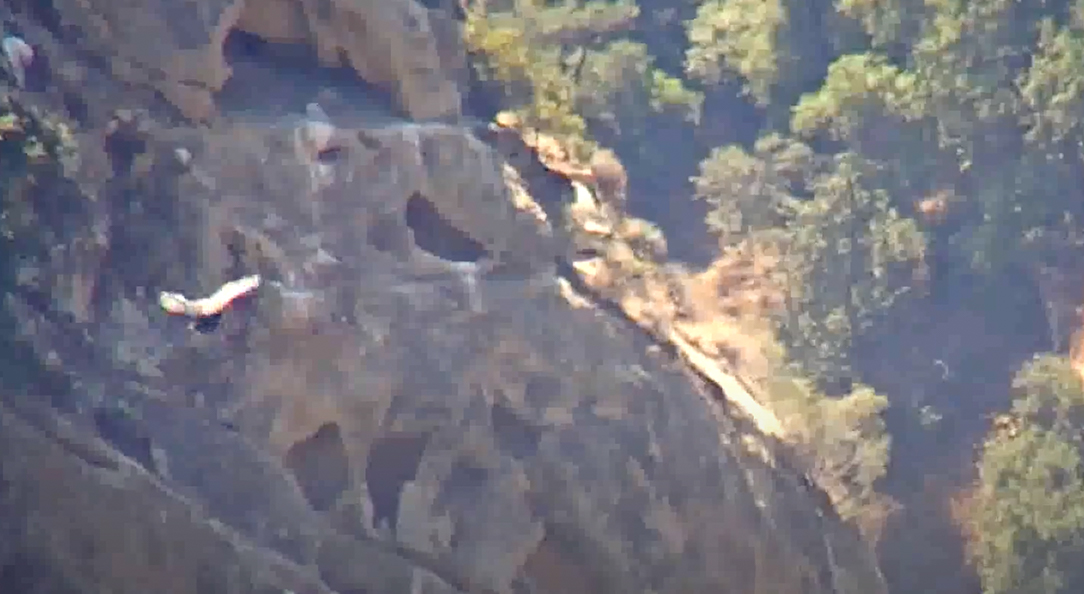
At just over 6 months of age, the young condor nestling #980 has fledged after 187 days. Watch the young condor confidently take wing on October 14. After making a sustained flight out of view, the fledgling returns to perch on its favorite rock in the nesting cave. Way to fly #980!
Nov. 4, 2019: Update From Condor Chick #980’s 120-day Health Check
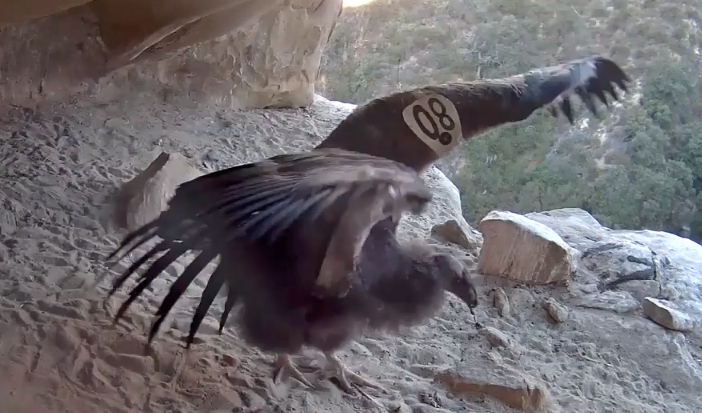
Our partners at the U.S. Fish and Wildlife Service report good news from #980’s 120-day health check! #980’s blood tests came back with low lead levels, and the condor’s DNA results reveal that it is a male.
Oct. 14, 2019: California Condor Chick #980 Fledges
Big news! At just over 6 months of age, the young condor nestling #980 has fledged after 187 days. Watch the young condor confidently take wing on October 14. After making a sustained flight out of view, the fledgling returns to perch on its favorite rock in the nesting cave. Way to fly #980!
Aug. 23, 2019: Q&A With Condor Biologists On The Condor Cam
Condor biologists provide their expert insight about the 2019 cam season, share some background about the massive California Condor recovery effort, and field questions from viewers during this one-hour live Q&A session on the Condor cam. Thanks to Dave Meyer from the Santa Barbara Zoo, and Erin Arnold and Molly Astell from the U.S. Fish and Wildlife Service for taking the time to answer questions from viewers.
Aug. 8, 2019: Pole Canyon California Condor 120-Day Health Check Highlights
In Pole Canyon, biologists from the U.S. Fish and Wildlife Service and Santa Barbara Zoo rappel into the condor chick’s cliff-side nesting cavity. Each condor chick in the Southern California population receives a 120-day health check.
June 5, 2019: California Condor Cam Is Live From Pole Canyon
Watch North America’s largest flying land birds soar back into the breeding season on the 2019 California Condor cam! A new year brings viewers to a new nesting cavity, Pole Canyon, where an 18-year old male (#262) and a 9-year-old female (#563) attempt their first nest together as they work to raise a 56-day-old chick (hatched April 10) into a healthy fledgling over the next 5 months. Now’s your chance to watch these magnificent scavengers live from their cavernous nest area near the Hopper Mountain National Wildlife Refuge in Southern California.
2018 Season Timeline
Oct. 9, 2018: Condor #923 Fledges, Makes Long Flight To Unexplored Territory
All that practicing has payed off! Watch #923 make a steady, sustained flight from the top of a rock to some previously unexplored territory in the canyon of Hutton’s Bowl. This flight was a long one for the young condor, and it comes just days after condor biologists confirm that #923 was developed enough to fledge.
Oct. 3, 2018: Condor Chick Revealed To Be Male During Live Q&A
Watch this archived version of a live Q&A session with Condor researchers Nadya Seal Faith from the Santa Barbara Zoo and Molly Astell form the U.S. Fish and Wildlife Service as they discuss all things condors. These condor experts talk about everything from the intricacies of the California Condor Recovery Program to setting up cameras in wild condor nests, and they reveal the sex of the Hutton’s Bowl condor chick.
Aug. 9, 2018: Hutton’s Bowl Condor 4-Month Nest Entry Highlights
Tag along with California Condor biologists from the U.S. Fish and Wildlife Service and Santa Barbara Zoo as they rappel down to the Hutton’s Bowl condor nest to conduct a heath check on the 4-month-old chick. Go behind the scenes and and discover how these routine health checks are helping wild condors increase their nest success in Southern California.
May 31, 2018: Hutton’s Bowl California Condor Cam Goes Live
The 2018 cam season features a new breeding pair with their new chick at a new location known as Hutton’s Bowl. Watch a 16-year-old female (#289) and a 13-year-old male (#374) attempt their first nest together as they work to raise a nearly two-month-old chick (hatched April 6) in a cavernous nest area near the Hopper Mountain National Wildlife Refuge in Southern California.
2017 Season Timeline
Jan. 2, 2018: Season Ends With Encouraging News From Devils Gate After California Wildfires
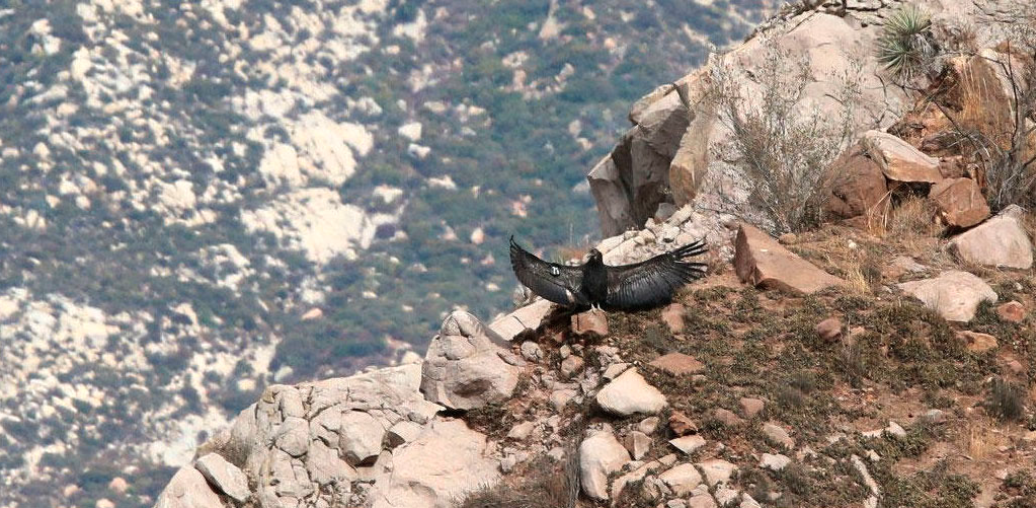
After the wildfires in Southern California died down, Condor Biologists at the Hopper Mountain National Wildlife Refuge were given the all clear to make a check up on condor chick #871 and the adults at the Devils Gate. We are happy to report that the team was able to pick up a healthy signal from #871’s transmitter near the Devils Gate nest, and both parents were seen flying near the nest area. These indicators suggest that #871 has likely fledged and has become the newest member of the free flying California Condor flock in Southern California!
Sept. 5, 2017: The Results Are In, #871 As A Female
Our collaborators on the California Condor cam have gotten the results back for the Devils Gate chick’s sex, and she’s a girl! Every addition to the wild-flying population is important, and here’s hoping that young #871 goes on to breed successfully for many years once achieving adulthood!
Aug. 8, 2017: Devils Gate Chick Receives 120–day Health Check, Wing Tag
The Devils Gate chick reached another milestone today when USFWS and Santa Barbara Zoo condor biologists climbed up the rocky slopes beneath the nest area and conducted a scheduled 120–day heath check. The check included taking blood samples to test for lead poisoning and sex the bird, vaccinating the chick for West Nile Virus, sifting the entire nest area for harmful microtrash, and attaching a numbered tag and radio transmitter to the chick’s wing—which will help researchers identify and track the bird in the wild. Hello #871!
June 7, 2017: Condor Cam Q&A with Joseph Brandt and Estelle Sandhaus
Watch a live Q&A session with California Condor researchers Joseph Brandt from the U.S. Fish and Wildlife Service and Estelle Sandhaus from the Santa Barbara Zoo, as they review the troubled past of these magnificent birds, talk about endangered species management, and field questions from viewers!
May 30, 2017: California Cam Goes Live From Devils Gate
The Devils Gate Condor Cam has launched live from a nook on a cliffside ledge in the Los Padres National Forest. 2017 features condor #206, a 17-year-old male that has nested in the Devils Gate territory since 2007; and #513, an 8-year-old female who joined him in 2015. Their lone chick has hatched on April 11 after the egg was laid on Feb 21.
2016 Season Timeline
Sept. 30, 2016: Condor Chick #815 Passes Away
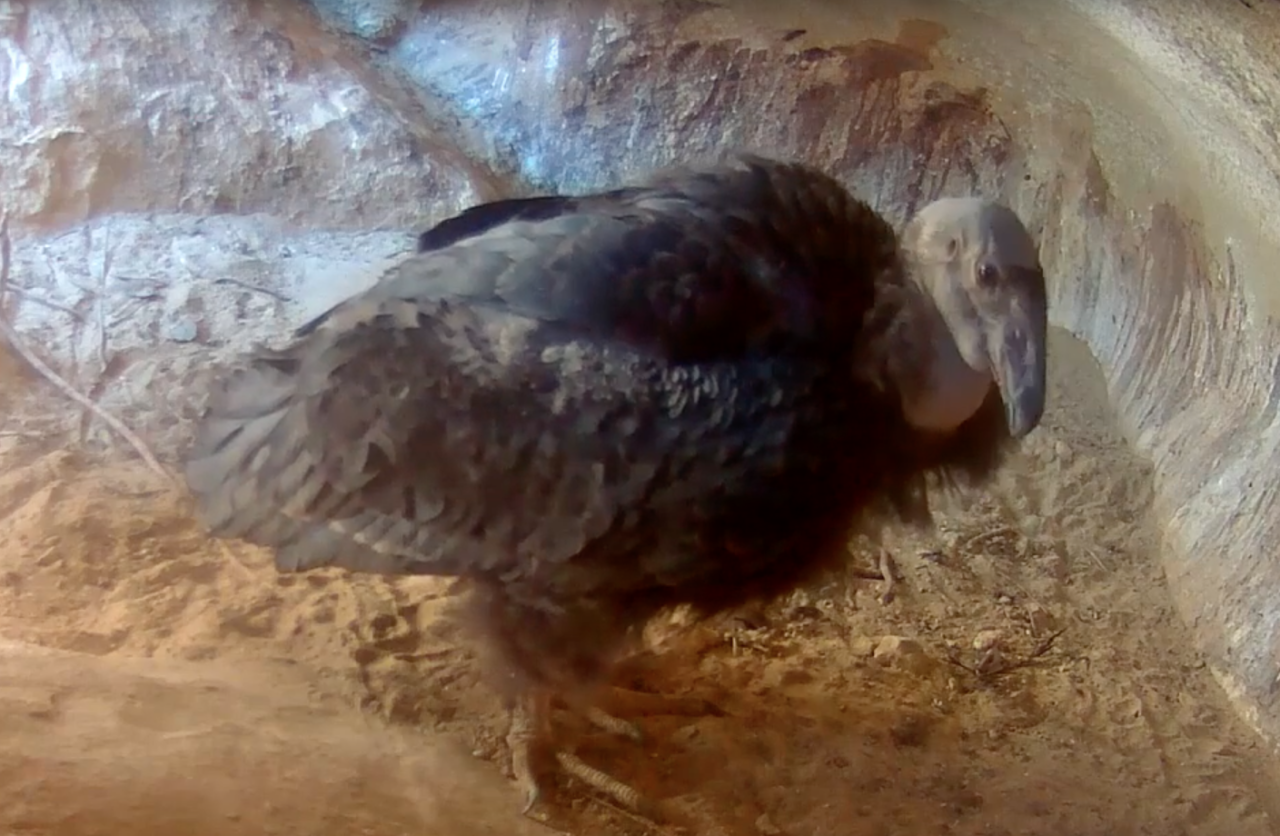
We are saddened to share the news that California Condor chick #815 has passed away. We received a report from biologists at the Hopper Mountain National Wildlife Refuge that the chick’s remains had been found on the steep slopes high above the nesting cavity in the Koford’s Ridge area. The biologists were able to track the location using radio telemetry after receiving a mortality signal (indicating that the chick had not moved for 12+ hours) from the transmitter in the chick’s wing tag. The cause of death is undetermined and necropsy results suggest likely predation.
Sept. 16, 2016: Condor Chick Fledges In Kofords Ridge
The condor chick has switched from spending its time in the nesting cavity to scaling around the Koford’s Ridge area. This clip, documented by Eliana Moustakas from the Great Basin Institute, shows footage of the condor chick practicing some “tester flights”. Here you can see the chick gliding from the edge of a shallow cliff into the brush below.
Aug. 4, 2016: Condor Chick Receives 4-month Health Check
The results of the California Condor chick’s 4-month checkup that was conducted by the USFWS and Santa Barbara Zoo condor biologist team on August 4th are in. We are happy to report that the chick received positive grades across the board on its physical health and had a whopping weigh in at over 20 pounds! The chick’s blood test revealed lead levels at 23 micrograms/deciliter, which suggests that the chick had been exposed to lead to some degree. However, lead exposure is common in condors and these results were deemed below the level that is serious enough for treatment (35 micrograms/deciliter).
April 14, 2016: Live Q&A with Condor Biologists On Kofords Ridge Cam
Watch a Q&A session with California Condor biologists Estelle Sandhaus and Joseph Brandt. Watch for answers to some great questions, including why the birds on Condor Cam are often seen sifting sand in the nest.
April 4, 2016: Condor Chick Hatches In Kofords Ridge
Watch the condor chick emerge from the egg early on April 4. It usually takes around 3 days for a chick to fully hatch from a pipping egg. The egg started pipping on April 2, and the chick fully emerged on April 4! Here’s a short highlight of the hatching.
April 2, 2016: Kofords Ridge Condor Cam Nesting Season Introduction
On March 2, 2016 a cam was installed in the new nesting cave of the Koford’s Ridge condor pair. However, on March 20, their egg disappeared (likely predated). Responding quickly, biologists inserted a fake egg into the nest the next day to ensure that the condor pair continued at the nest. Within 20 minutes, the female returned and resumed incubation. On April 2, biologists returned to replace the fake egg with a pipping egg from the captive breeding program at the LA zoo. The condor pair returned almost instantly and seemed to completely accept the pipping egg!
2015 Season Timeline
Feb 23, 2016: Lead Poisoning The Cause Of Death For Last Year’s Nestling
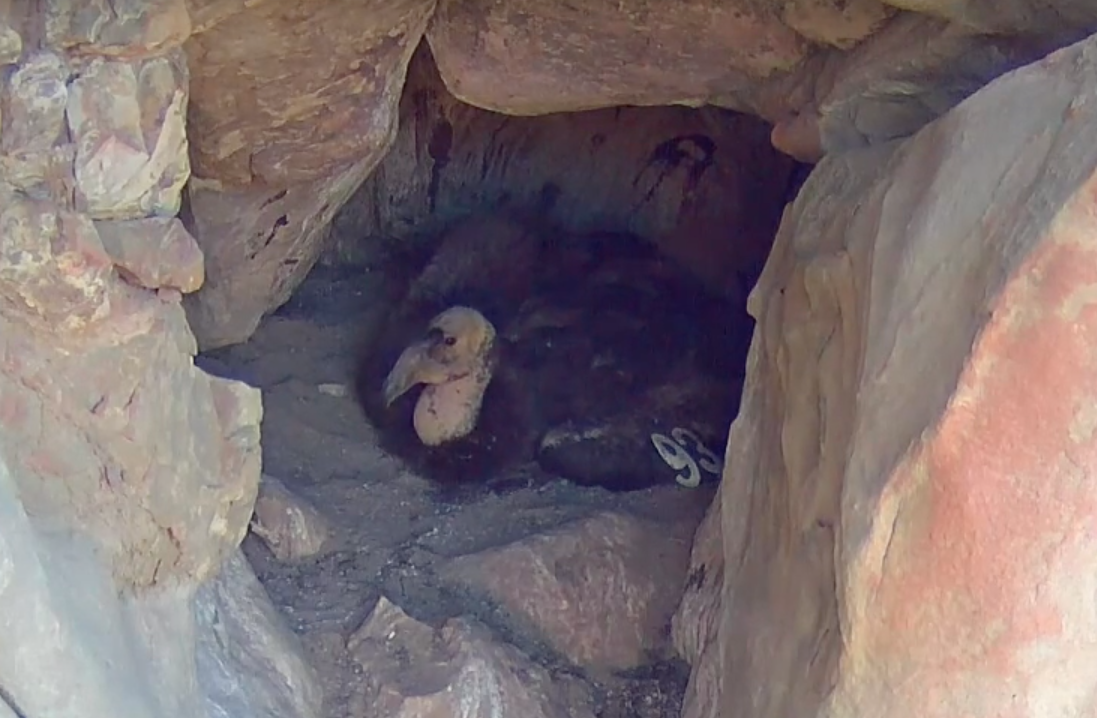
Lead poisoning has been determined as the cause of death for last year’s nestling on the Kofords Ridge California Condor Cam. Despite the incredible efforts of the last 30+ years, there are still challenges to the ongoing conservation of the condors. Lead poisoning is a leading cause of mortality now, almost entirely from lead ammunition fragments scavenged from the carrion that these amazing birds specialize in eating. Hunting as well as depredation of wildlife and livestock provide an important food source for condors and other scavengers. The use of non-lead ammunition maintains the importance of hunting and shooting as a traditional and important conservation tool, while eliminating unnecessary impacts to scavengers.
Sept. 25, 2015: Sad News, #793 Has Passed Away
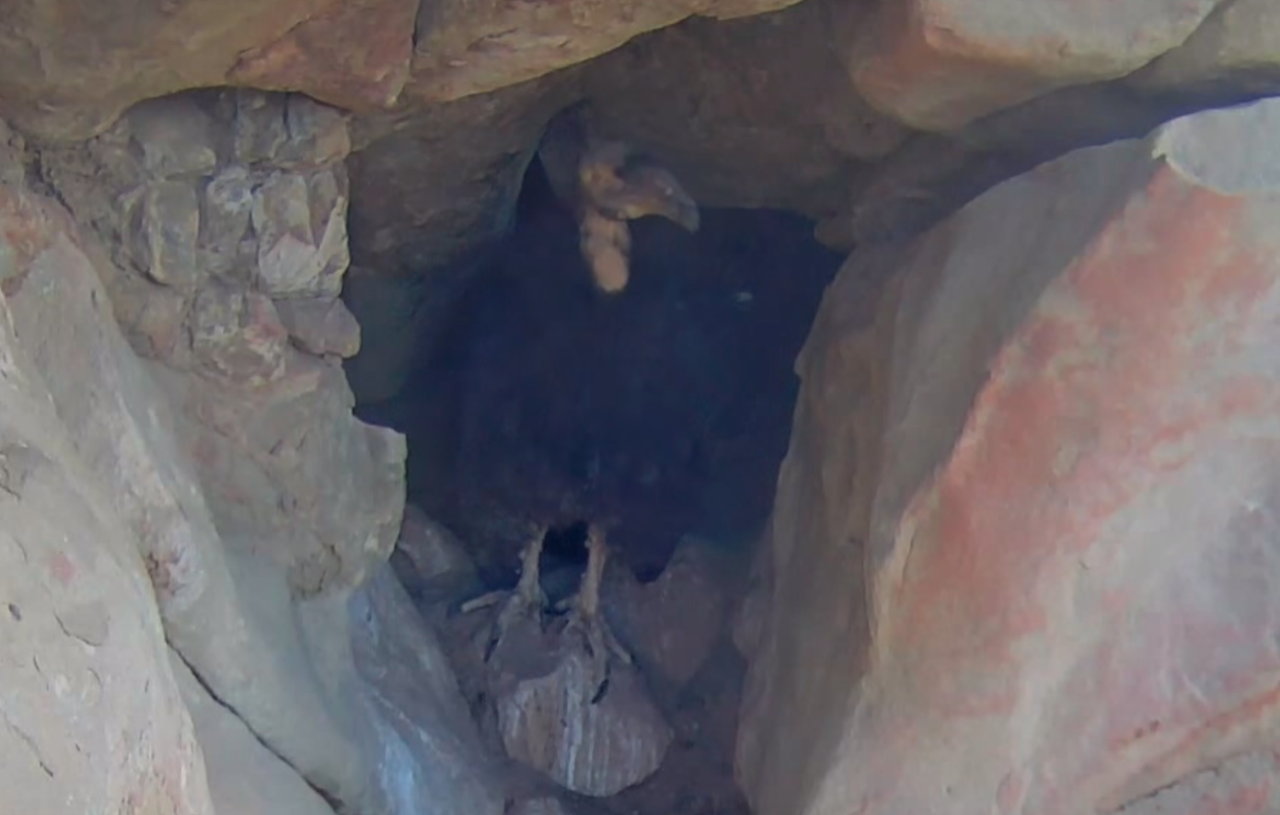
We are sad to share news that the young California Condor chick #793 has passed away. The chick’s body was found and recovered below the nest cliff on September 24, 2015, after biologists received a mortality signal from the bird’s radio telemetry equipment indicating that the chick had not moved for more than 12 hours. All of us on the Condor Cam project are saddened by this outcome, and are working to learn more. The U.S. Fish and Wildlife Service will perform a necropsy to try to determine the cause of death. The process may take a few months, and we will share any new information when the process is finished. The California Condor Recovery Program will continue its work to grow the population that includes both the release of captive-bred birds and natural recruitment from wild-fledged nests.
Aug. 26, 2015: California Condor Cam Goes Live To The Public

Bird Cams is a free resource
providing a virtual window into the natural world
of birds and funded by donors like you
Pileated Woodpecker by Lin McGrew / Macaulay Library
